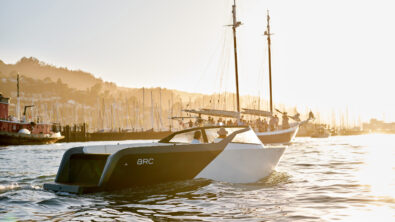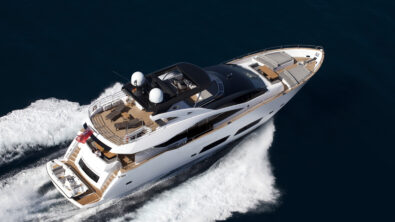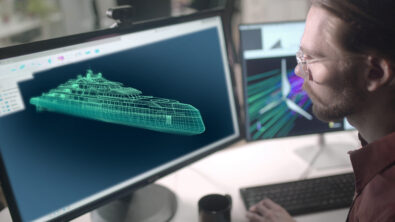Light-bulb economics and basic engineering of auxiliary systems

The last time I went shopping for light bulbs, it wasn’t an easy choice. There were way too many options. The so-called super energy efficient light bulbs (LED) claimed to have a longer life but also costed 4 – 5 times more than the others. At that point, it would have been unacceptable to fire open a spreadsheet, but a quick pocket calculator analysis using the following formula:
Cost/KWh x Avg. daily hours of usage x Rated Wattage x 365 + Upfront Price
showed that the costs break even within a couple of years. So, I decided to go for the expensive one. Although I cannot notice how much energy I save each time I use it, not having had to replace it for almost 6 years seems to have made up for the higher initial cost. It is still interesting to see how the initial cost diminishes exponentially in comparison to the slowly accruing operating costs (Figure 1):
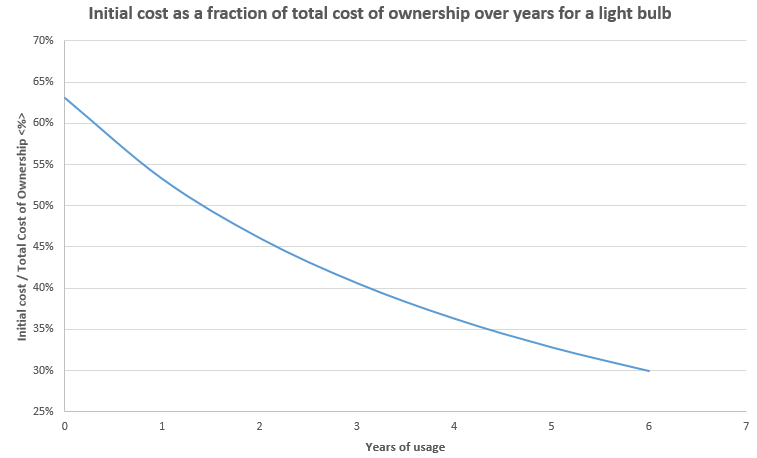
In the marine industry, heavy duty assets used to move and store fluids like pumps, valves, pipes, compressors, heat exchangers, storage units etc. are integral to safe and efficient operation of pretty much all auxiliary systems. Much like a light bulb, these continue to stay in operation, in most cases even when the ship is docked. Although the upfront cost of procuring these assets is quite high, it is significantly outweighed by the total cost of ownership over their lifetime. A typical breakdown of the total cost of ownership based on the full-scale system imported from NX CAD (refer to Part 1 in this blog series) is shown in Figure 2.
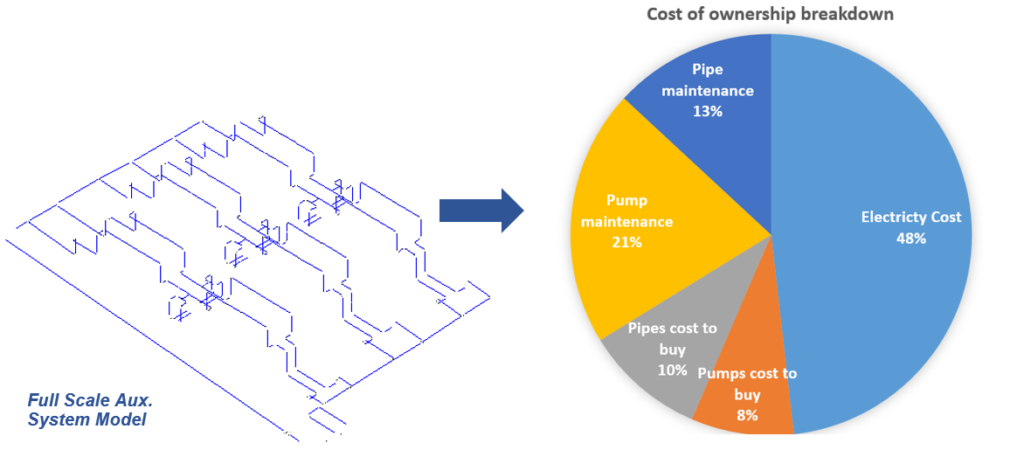
The choice between paying more now vs. paying more later isn’t as obvious as it is for a light bulb because it is difficult to assess how a combination of such assets will perform once commissioned. Purchasing the best individual components is no guarantee of the best long term performance as a fully functional system. The owner is thus confronted by a range of options, each more convoluted than the other, making it extremely difficult to decide which one to pick. This complexity unfortunately results in many owners deciding to play it safe and simply defaulting to a previous practice. This not only leads to repeating past mistakes but also incurs a loss of opportunity to save more and improve design and know-how.
The Gruhl’s curve (Figure 3) as it emerges, is a testimony of this as it demonstrates that cost and time overruns can be reduced by spending more during the initial concept and basic engineering phases (Phases A & B). This holds true for any large scale project from putting a man on the moon to making him survive on or under water for months at large.
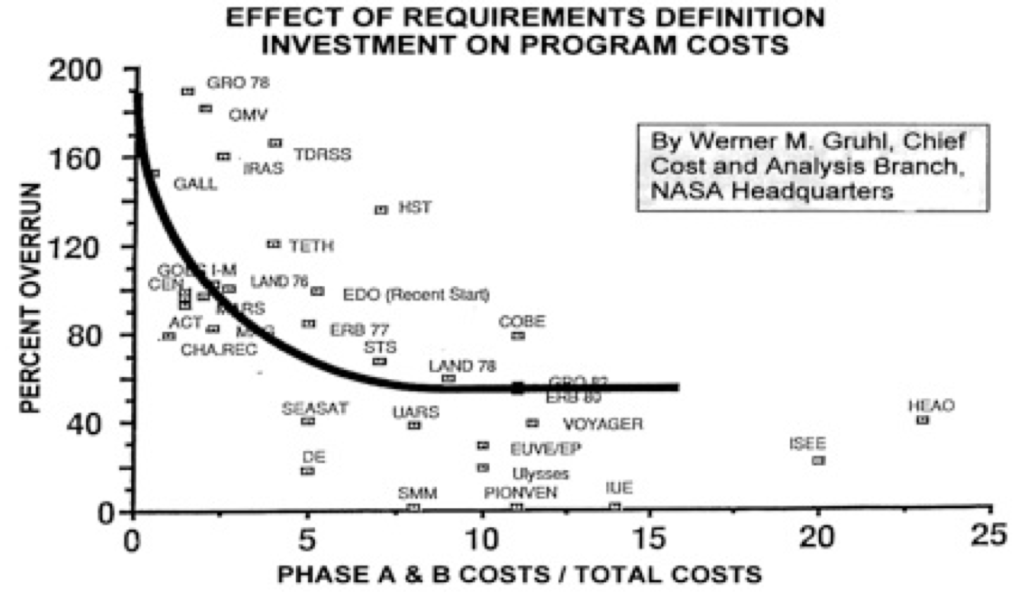
Decisions on what combination of heavy duty assets e.g. pipe schedules, pumps, etc. will deliver the best performance are not as straightforward. Understanding cost & safety implications of each design choice and finding the optimal design is clearly a task that requires a multi-disciplinary expertise from finance, engineering and R&D. No matter how convincing Gruhl’s analysis may be, this simply hasn’t been deemed practical by the industry as is evident in the CIM report 2018.

More recently though, with simulation, optimization and PLM technologies maturing and smoother interoperability between multiple highly specialized tools as offered by Siemens, such problems can now be solved in a matter of few days if not hours or minutes. With Simcenter Flomaster providing the basis for model-based systems engineering (MBSE) to develop the virtual plant model, Siemens Teamcenter providing financial/cost data and Simcenter HEEDS providing the state of the art “SHERPA” optimizer, knitting it all together to create an automated process which assesses each design for total cost of ownership (CAPEX & OPEX) becomes much easier and transparent.
Referring to the auxiliary system automatically created from NX CAD in the previous post, we created such a process with the following variables parameterized:
- Pipe Schedule Diameters
- Pump Capacities
- Heat Exchanger number of tubes
To ensure that the design is safety compliant, we impose the following constraints:
- Maximum pressure < Maximum allowable operating pressures (MAOP)
- Maximum temperature < Maximum allowable operating temperatures (MAOT)
We start with a baseline using traditional design methodology and take typical values for the pipe schedules and the corresponding pump capacities that satisfy all constraints. As a next step, the total cost of ownership over the lifetime of that design is estimated using a cost sheet (the data is fictitious but roughly corresponds to actual U.S. prices). An automated process is then set up in HEEDS to improve this design by minimizing the costs while ensuring that the constraints are obeyed. The video below summarizes how this was set up:
Within a few minutes, a new design is revealed costing 40% less than the initial design while ensuring all constraints of safety and reliability are met (Figure 4). This is only a basic run and the system can be even further optimized by having more variables or models set ups (e.g. with two parallel pumps instead of one) to bring about a reduction of about 60% over a robust initial baseline design. For those of you interested in learning more, please refer to this full article in Plant Engineering.
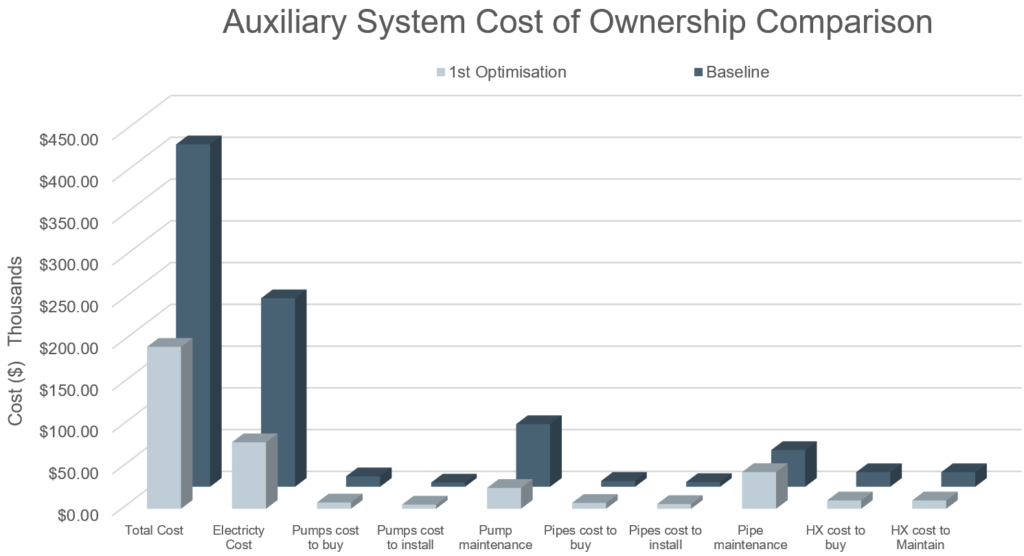
As the saved costs directly link to energy consumption, a more sustainable design is also the one that costs less. A bit like the LED light bulb, a stitch in time saves nine.
